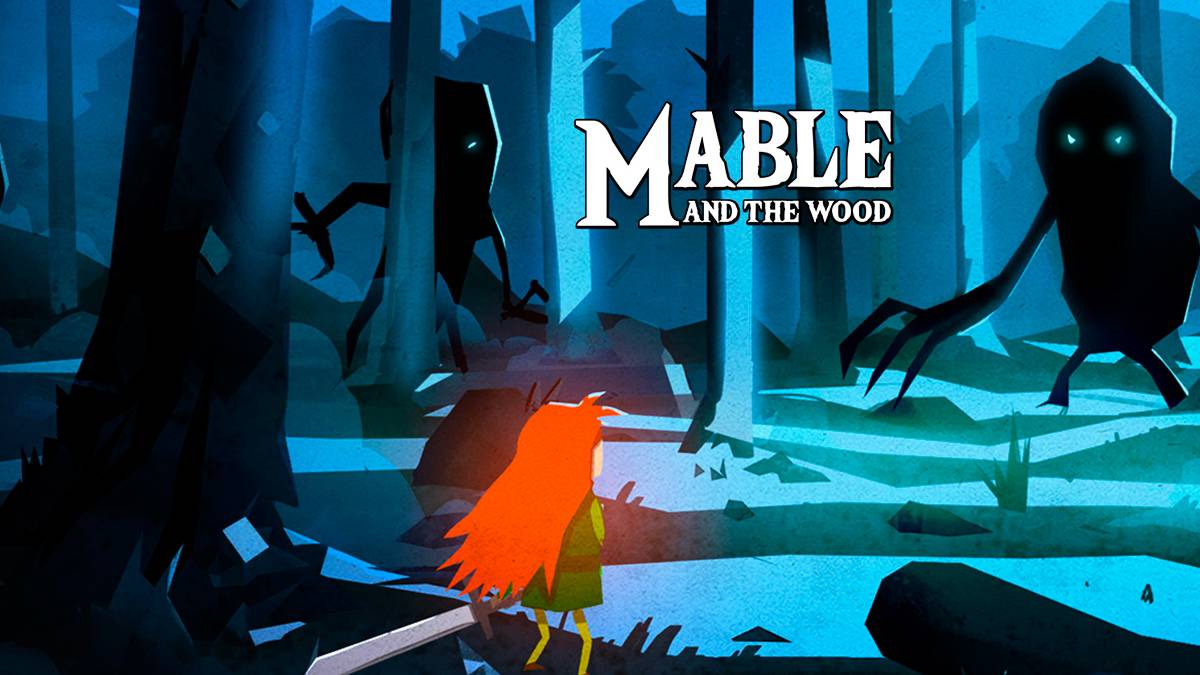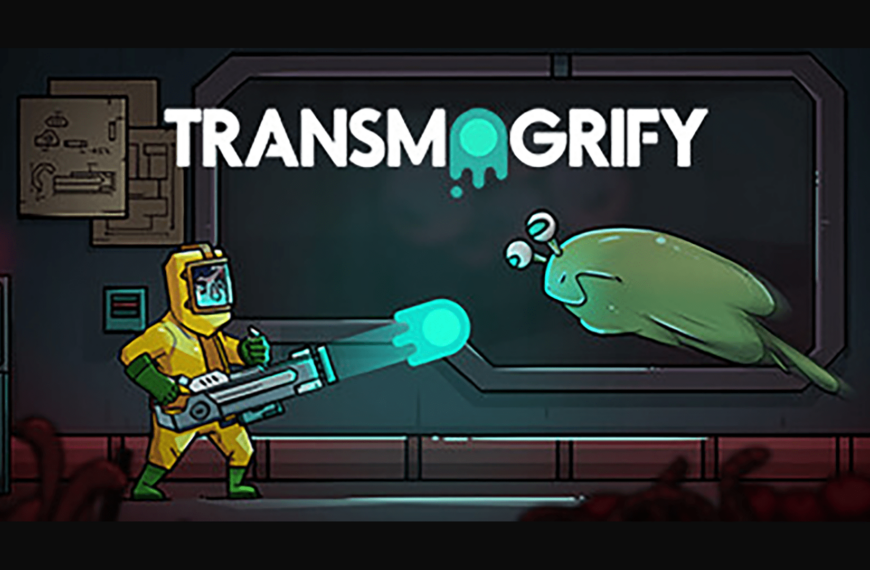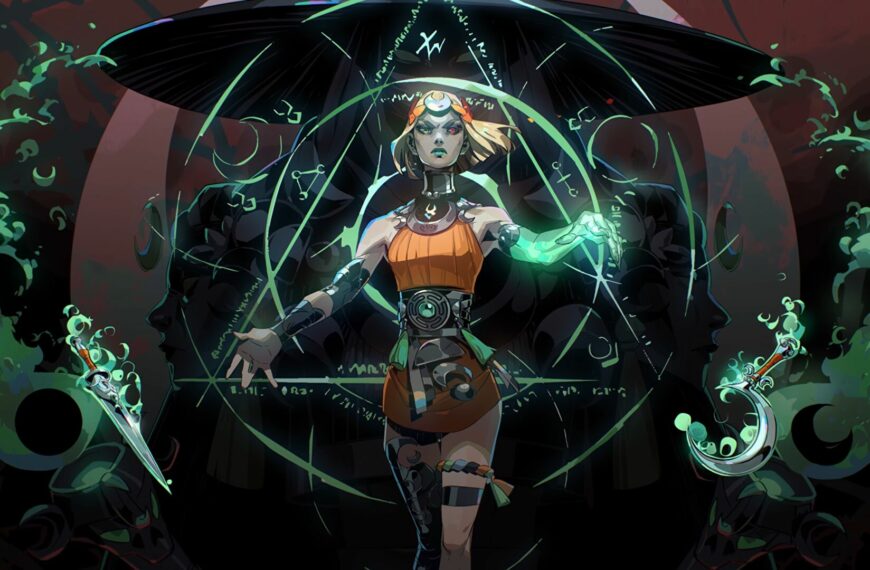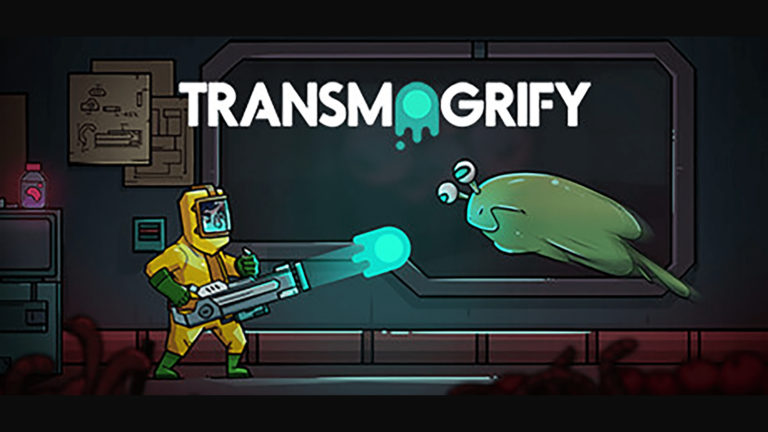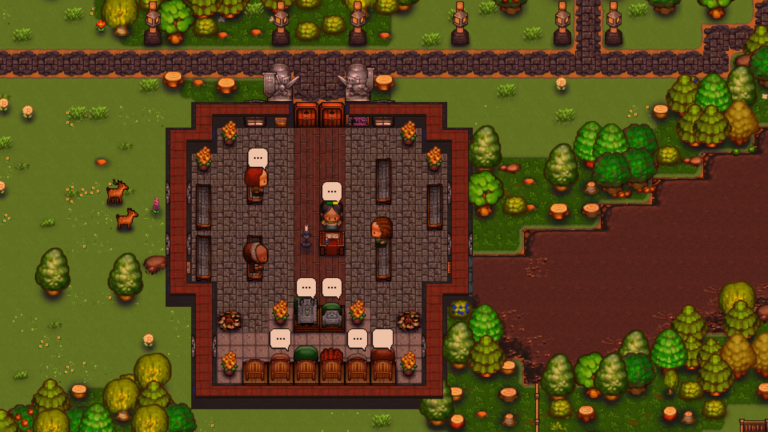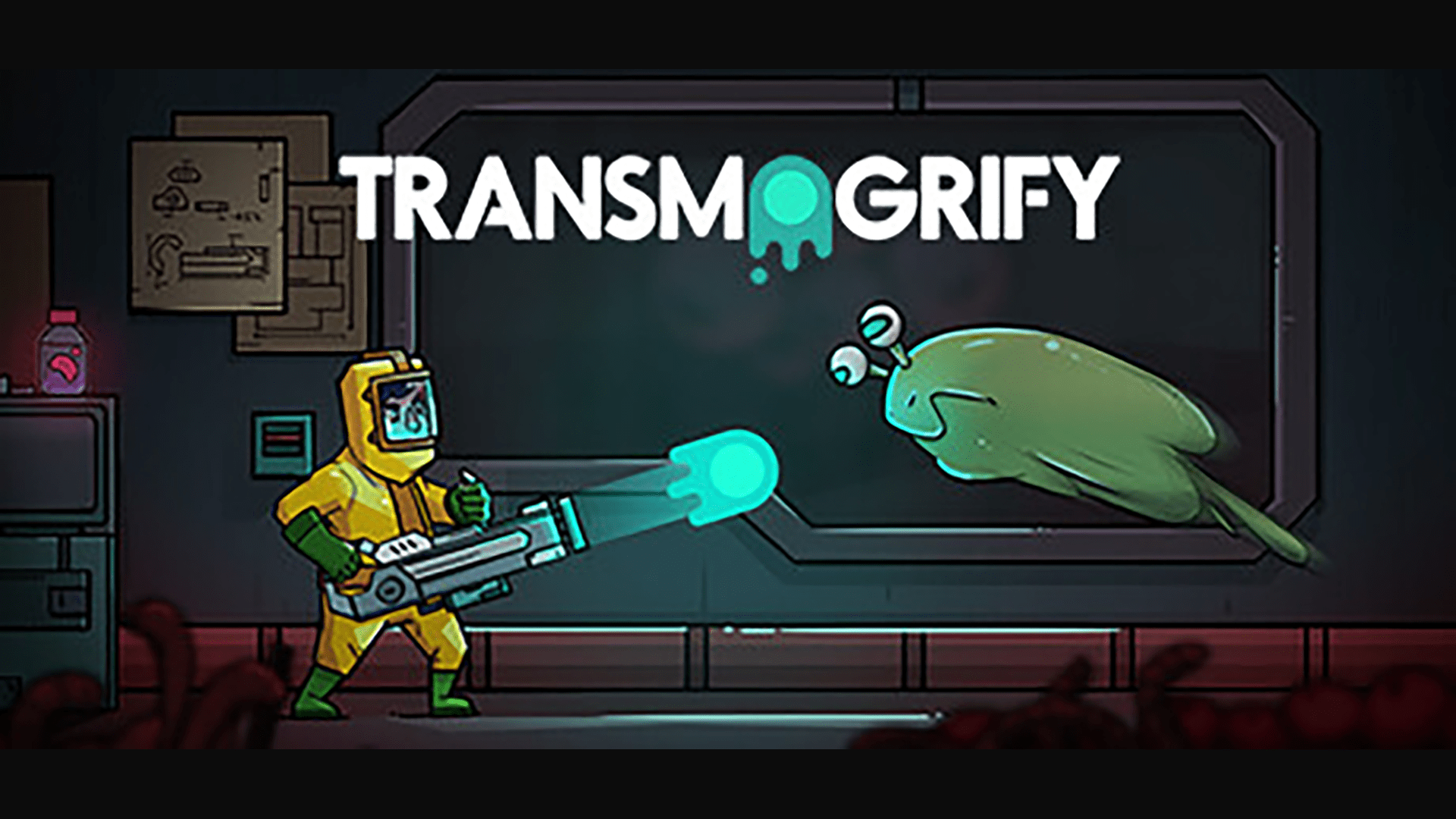I had high hopes for Mable and the Wood, which is never a positive way to start a review. It’s a game with excellent presentation, an interesting narrative, and a well-realized central mechanic with levels designed around it. Unfortunately, Mable and the Wood is held down by a number of incredibly glaring technical issues and design flaws that hold the game back.
The central conceit of gameplay is something I’m not sure I’ve ever seen done before, or if I have, nothing close to the way that Triplevision Games did with Mable and the Wood. You see, Movement Is Combat. They are the same.
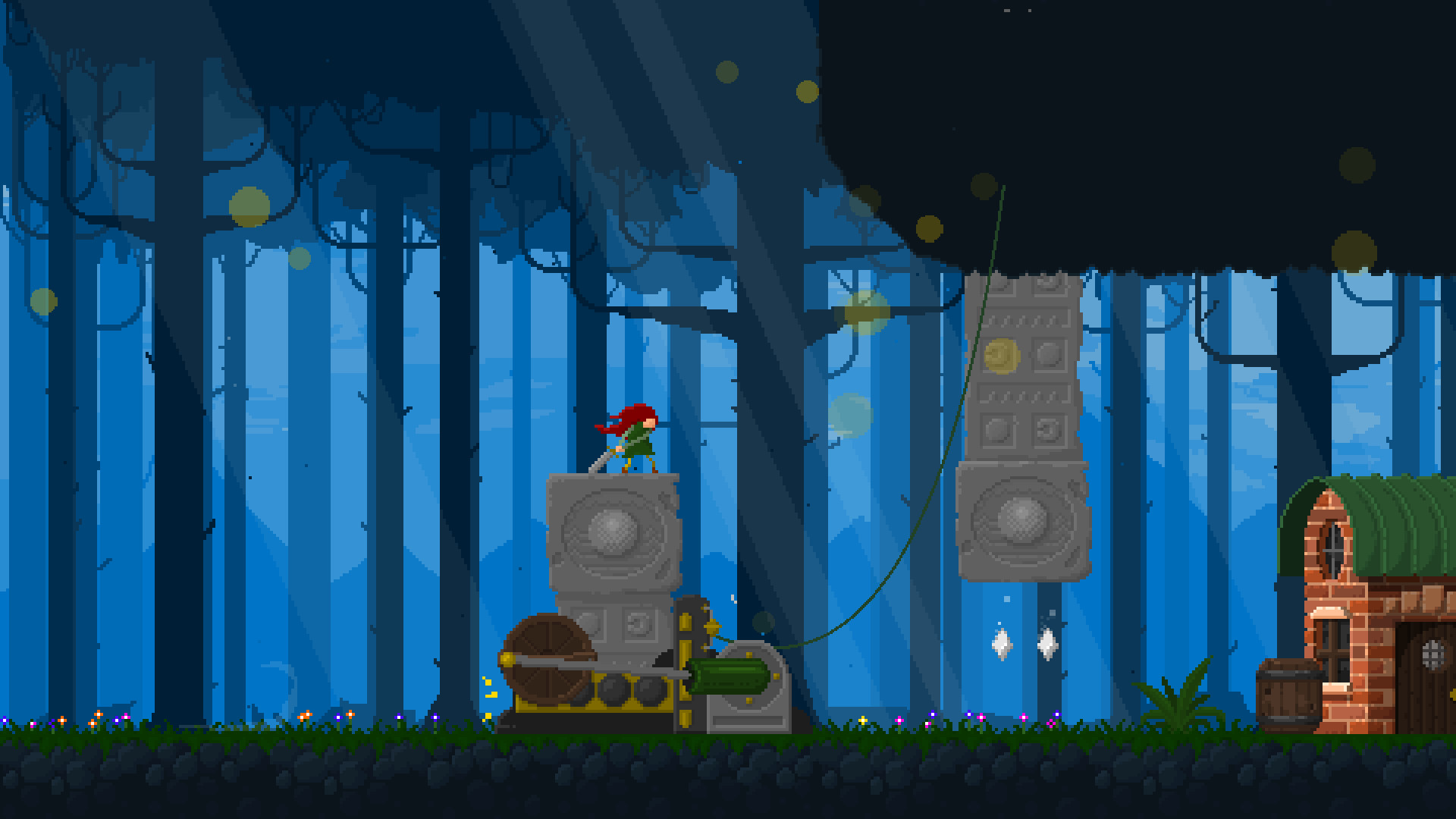
Wandering the Woods
Now what do I mean when I say that Movement Is Combat? Surely every game with both movement and combat tie them together in some way? Well, let me explain. The Player Character, Mable, is a little girl with a heavy sword. Too heavy to swing. She’s also not in the best shape for an action platformer protagonist, seeing as she can’t jump. What she can do is shapeshift. Specifically, she can transform into a fairy, as well as taking on the forms of any bosses she’s killed. The transformations that have movement abilities force Mable to drop her sword and recall it to her hand. Any enemies unfortunate enough to be between Mable and the Sword when it’s recalled learn the hard way what it feels like to be cleft in twain.
Mable’s transformations only last so long. She has a magic meter that drains while she’s transformed and when it runs out she returns to her human form. And she can’t transform again without dropping the sword, so if you need to quickly shift back, you need to call it to you again. This magic meter refill instantly upon touching the ground, or if you kill an enemy in midair. Mable and the Wood uses this mechanic well. There are a lot of interesting platforming challenges based around using the different forms, and levels are laid out to accommodate your use of them.
There’s a good variety of enemies, and it feels good to fight them, even with the unorthodox method of attacking Mable uses.
Unfortunately, I must end my praises here for now.
The game features money which can be used at shops around the world to buy either a healing item, a temporary extension of your magic meter, or a potion with an unknown effect. I bought that once and drank it with no noticeable effects, but I assume it’s story relevant.
You shouldn’t bother.
Money is scattered through the world, and you can sometimes acquire it from defeated enemies. However, money does not respawn. Ever. Which means there’s a soft limit on how much you can have, since getting some from enemies is random. And they only drop pocket change. Now, that wouldn’t be a problem on its own, except that Mable throws her money away with the fervor of Sonic the Hedgehog if you so much as sneeze on her. And with her slow walking speed, it’s almost guaranteed to disappear before you can get it back. And if you die, you take most of your funds with you. Technically, you can get this money back by breaking the crystal statue that spawns where you died, but in practice, the statue sometimes doesn’t spawn at all, and I’ve seen occasions where enemies have deleted the statue before I could reach it.
Poor Mable suffers incredible knockback on being hit, and while she has a health bar, you’re probably going to be thrown into an instant death trap more than not.
There’s an invincible, lumbering enemy in the mountains. There’s a section where you have to wait for it to move so you can reach the platform it’s on. It takes ten whole seconds for it to make enough space for Mable. I counted. In an action platformer, this absolutely kills the pacing. Ten seconds of doing nothing.
Mable and the Wood is, on a technical level, a mess. During my second playthrough (we’ll discuss my first later, it isn’t relevant here), I found my progress halted by a boss door. While I had a key, I did not possess the Boss Key. So I could not progress. Now here’s where the issue lies. There weren’t any other locked doors. I had opened them all. So I had no way to progress. I was hardlocked. I had to restart the game from scratch, two hours in. And to my surprise, when I returned to this dungeon, I discovered a room that had previously held two ordinary keys now held one ordinary key and the Boss Key. What on Earth happened behind the curtain that screwed up which key spawns? I doubt I’ll ever know.
Which is a shame considering it happened again later.
That’s right, I wasn’t hardlocked just once playing this game, but twice! Fortunately, I had an ability (acquired from the boss I couldn’t reach before, ironically enough) that allowed me to bypass the door entirely. On the other side was a long and frustrating combat encounter with a massive swarm of enemies, and I decided I had played enough of Mable and the Wood. I was already mentally exhausted from two hardlocks, even if I managed to escape one of them without restarting from scratch. But while these two glitches were the biggest errors I encountered, they were hardly the only ones.
Mable’s movement abilities have more problems with collision than a competitive bumper cars tournament. I frequently found myself stuck in walls, and I once fell into a pool of lava—normally instant death—only to be pushed out through a wall and up through a ramped floor to safety. Somehow. Personally, my favorite error was on my third playthrough, after I’d been forced to restart from the hardlock. According to my save file, I have played that run for a grand total of 2 hours, 1 minute, and 7,214 seconds. A perfectly normal amount of time, I’m sure.
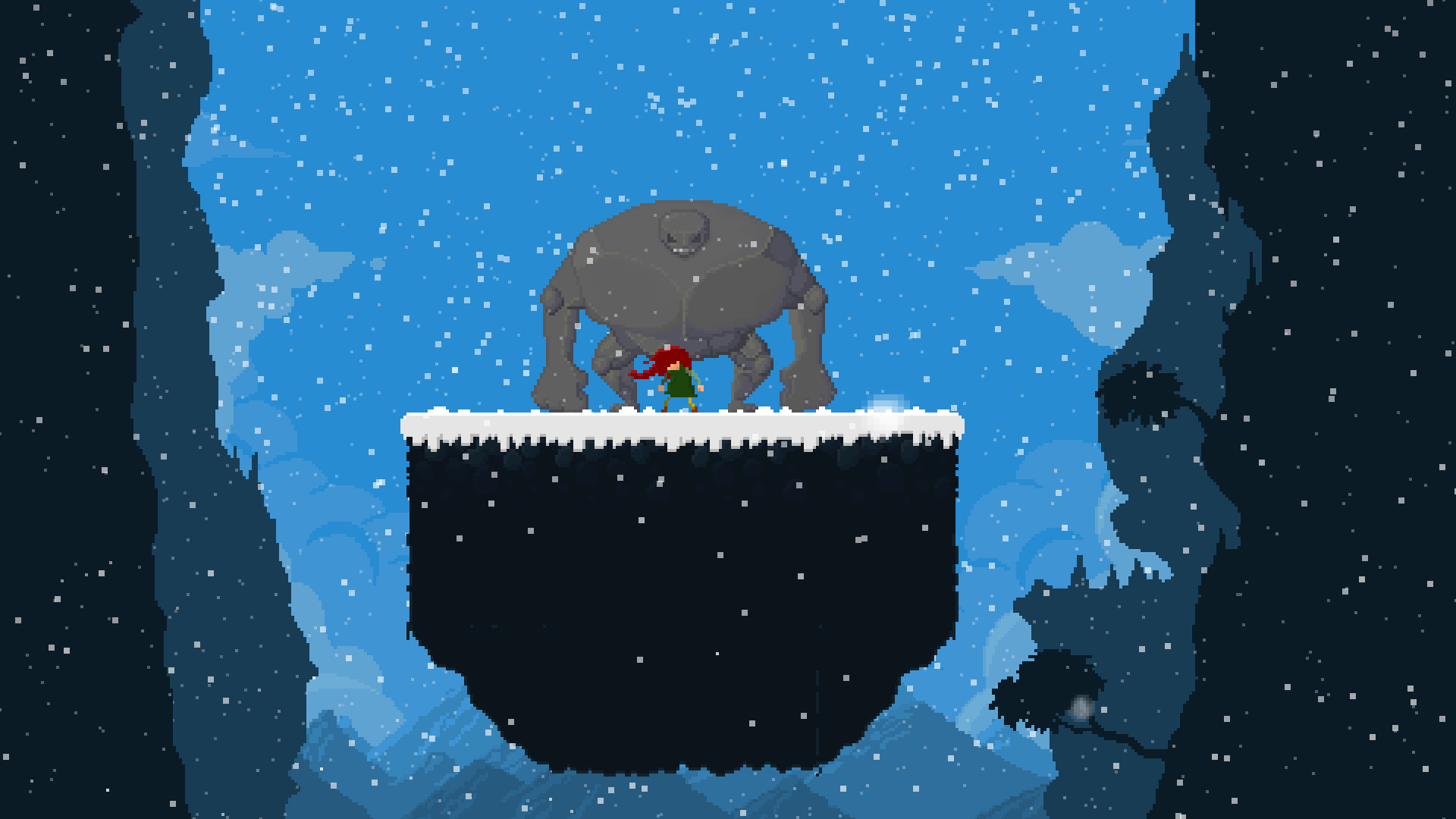
Pixel Paintings
Oh good! I can go back to praising it some more.
Mable and the Wood is absolutely stunning. The pixel art is not attempting to recreate retro games. It has its own distinct visual style and the spritework is masterful. Movements are fluid and characters are expressive. Emotive even. Mable’s sprite even keeps her hair flowing consistently, no matter which way she faces.
The backgrounds and environments are not only distinct, but gorgeous. I cannot overstate just how pretty this game looks. The backgrounds are layered parallaxes so they can scroll independently and give you a better sense of depth.
The HUD elements are all well placed an unobtrusive. Mable’s magic gauge appears over her head as well as under her health so you can see how much magic she has left while watching her sprite move.
The music is so good I want the OST just to listen to. I’m not sure there’s anything else I need to say about it. But I’ll try. It perfectly works itself into the environment and never becomes grating.
The game has a very cohesive feel of a gothic fairy tale. I love it. I love it to pieces. I cannot get enough of the music or the art. It’s so good.
The story… exists. It’s not bad, not at all. But you can’t get the whole thing in a single playthrough for reasons detailed below, and since I was unable to make it through the glitches and less well thought out design elements, I never learned the whole story, so there’s not much I can say.
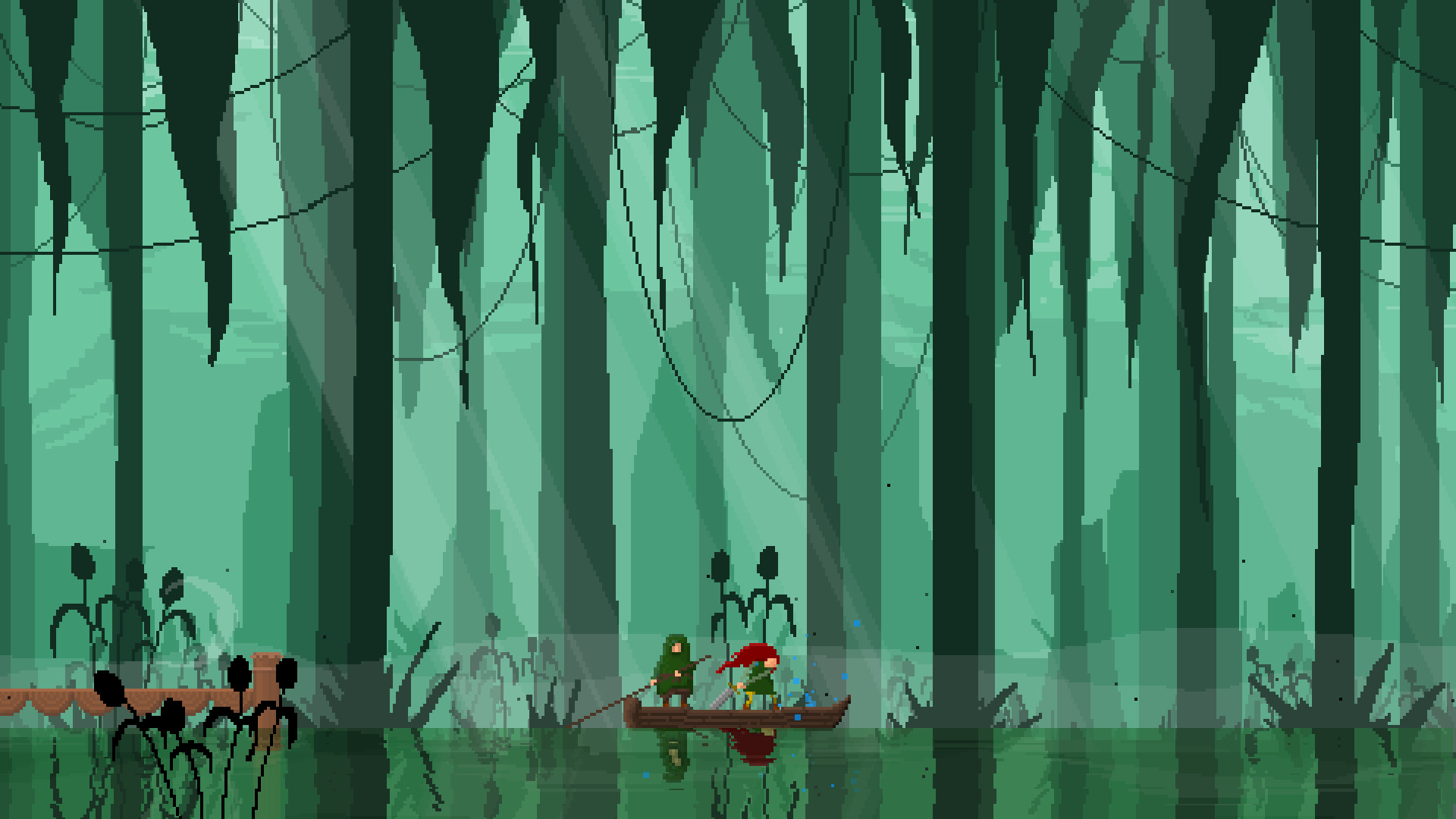
The Twist (That They Spoiled on The Store Page)
How far are you willing to go to be a good person? I believe this is the central theme of Mable’s narrative.
Mable and the Wood advertises itself as a game that you can complete by bypassing the boss fights and never killing anything. But the game itself doesn’t tell you this. The only way you’d think that maybe you shouldn’t kill any of the myriad of monsters that want you dead is that the people who told you to kill the monsters are a cult as portrayed by Monty Python’s Flying Circus. And you might easily just read that as being the game’s charm. And I would argue that is the point.
(I’ve been told that if you get far enough, it becomes clear your actions have negative consequences for the world, so doing a second, pacifist playthrough makes sense. I’ll discuss this later.)
The secret paths to avoid fighting bosses are just that: secret. They are annoying obtuse to find because there is no signposting one way or another, except for the old woman who complimented me for not fighting a boss I hadn’t even found yet. I frequently found rooms where I couldn’t tell if I was doing something wrong or if it wasn’t actually possible for me to get through the room without an ability I couldn’t acquire on a pacifist run.
And then there’s the finnicky combat. While it works well if you’re trying to kill things, it’s infuriating in a pacifist run because while you’re told if an enemy is in a direct line, you aren’t told if you’ll clip an enemy because the sword is wider than the enemy check. And there are many, many sections where it’s incredible easy to kill something on accident.
Also Read
Transmogrify PC Review: The Best Way To Defeat An Enemy
Transmogrify is a game with a strong central idea let down by a shoddy execution resulting in an experience that is…
Defy the Gods as a Witchy Moon Goddess in Hades 2
Supergiant announces Hades 2 for 2023 at the 2022 Game Awards. The sequel promises dark sorcery, witchery, and more frenetic roguelike…
The Bats are particularly noteworthy for this, as they move in a way that makes it incredibly difficult not to kill them by accident. They aren’t just easy to kill, they’re hard to not kill.
Again, my hypothesis is that this is the point. How far are you willing to go to be a good person? Will you go out of your way and put up with incredible frustration because it’s the right thing to do, or will you break and slaughter everything that gets in your way because it’s easier?
But the thing is… the game isn’t actually designed to facilitate pacifist runs. The store page tells you they exist, and certain story beats heavily encourage it, but, well, I think it’s time I talk about my First Run.
As you might have guessed from my description earlier, my Second Run was an attempt to play the game normally, as though I’d never heard of the game or its marketing. Killing everything so I could see the bad ending and see the story unfold so I had the context I would miss in a pacifist run.
My first run was a pacifist run.
It has a playtime of just over 50 minutes. In a pacifist run, you can reach the cavern in about 5 of those fifty minutes. I have no idea how long it takes you to progress from the caverns in a pacifist run. I never managed it. When I say there is no signposting, I mean it. The Blind Pacifist Run is an exercise in futility and frustration. I have no idea which way is correct. I have no idea which rooms will lock me and force me to fight or reload a save. I have no idea if reloading a save resets my kill count if I killed something accidentally.
Locking yourself into frustrating situations is not only part of the Blind Pacifist Run, but the thing you’ll do more than anything else in a blind pacifist run. If you don’t know how to get into the caverns, then you’ll continue moving right. It’s the only direction you can go. Congratulations, the only thing to the right is the trick forest dungeon and the first boss. So when you make it all the way to the boss and realize your error, you’re forced to trek through the entire forest again, backwards.
Being a good person is hard, yes, but enough is too much.
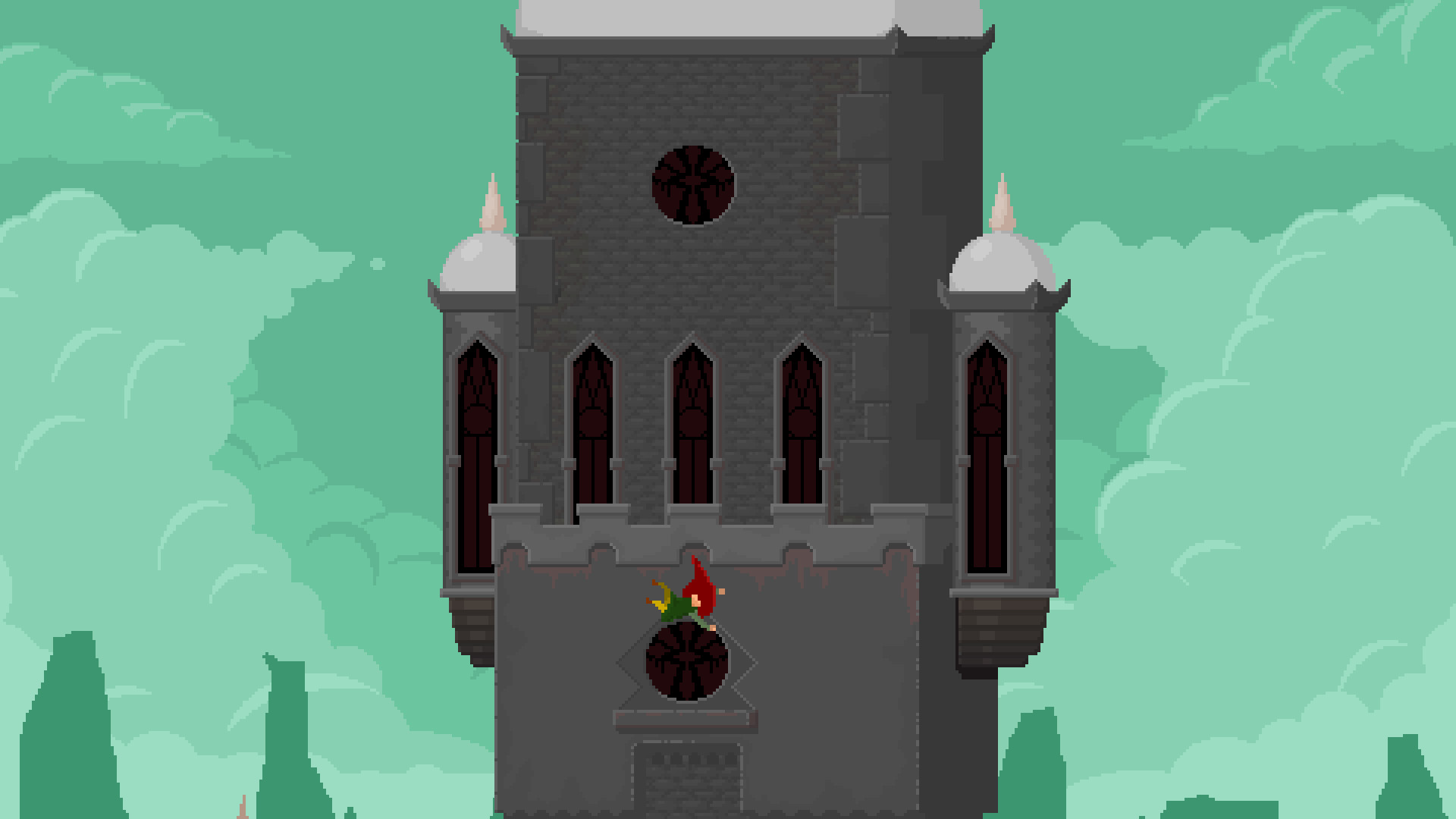
Conclusion
If you have the time and the patience to put up with glaring technical issues and some frustrating combat encounters, Mable’s story may have something interesting to say on the nature of morality.
And at the very least, you’ll have gotten to hear the music.

